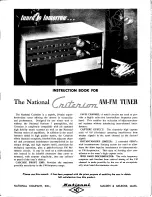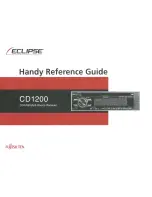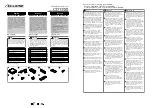
EN
3
DSMX
®
Spektrum launched the 2.4GHz RC revolution with its DSM2
®
technology.
Since then, millions of hobbyists the world over have come to embrace 2.4 as
the way to fly. Spektrum leads the way yet again with DSMX—the world’s first
wideband frequency-agile 2.4GHz signal protocol.
How Does DSMX Work?
It’s a crowded 2.4GHz world out there and every 2.4GHz system faces the
same challenges. DSMX better equips you for these challenges by combining
the superior data capacity and interference resistance of a wideband signal
(like that used in DSM2) with the agility of frequency shifts. Compared to the
wideband signal of DSMX, the narrow band signal of other frequency hopping
2.4 transmitters is more likely to suffer data loss in the event of on-channel
interference. Think of it as a river vs. a stream. It takes more interference to dam
a river than it does a stream. As more and more 2.4 transmitters vie for the same
number of available channels, there is more interference and more of a risk for
data loss. By adding the agility of frequency shifts to the superior interference
resistance of a wideband signal, DSMX is far less likely to suffer significant data
loss from on-channel interference. The result is quicker connection times and
superior response in even the most crowded 2.4GHz environment.
DSMX Operational Differences
DSMX transmitters and receivers function nearly identically to Spektrum DSM2
systems. Binding, setting the failsafe, recording flight log data, as well as general
use of the system is no different than using any current Spektrum system.
Following are the operational differences:
Brownout Detection - Not Available on DSMX Receivers. DSM2 receivers
feature Brownout Detection that flashes the receivers LED if a power
interruption occurs. While DSMX receivers have QuickConnect
™
technology and
recover instantly from a power interruption, the architecture of DSMX prevents
Brownout Detection when operating in DSMX mode.
Flight Log Recording-Fades Higher than DSM2
Note that DSMX moves through the band while DSM2 finds two quiet channels
and remains on those channels. Consequently because DSMX operates on quiet
and noisy channels, it’s common to have more Antenna Fades than when using
DSM2, when used in busy 2.4GHz environments. When taking flight log data
readings, the Frames and Hold Data are important and should be used as a
reference while Fades are insignificant due to the nature of frequency shifting. A
10-minute flight will typically result in less than 50 Frame Losses and no Holds.
Just How Good is DSMX?
In multiple tests, 100 DSMX systems were operated simultaneously for
extended periods of time. During these tests each of the 100 systems was
monitored in flight and on the ground In every test not a single case of RF link
loss, latency increase or control degradation was experienced or recorded.
































